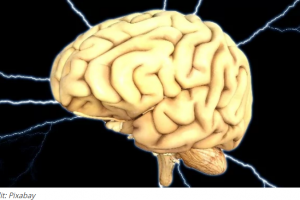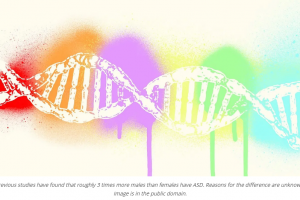Сan’t Switch Your Focus? You Brain Might Not Be Wired for It
A healthy brain can quickly switch its focus from the large shapes to the individual parts that make up the bigger pictures.
A healthy brain can quickly switch its focus from the large shapes to the individual parts that make up the bigger pictures.
But imagine taking a test in which a different shape flashes in front of your eyes every two seconds. You’re asked to name the larger (global) shape if the image is green, and the smaller (local) shape if the image is white. How well would you do?
This skill is called cognitive flexibility, and it is involved in virtually every complex behavior we undertake.
How fast people can make that transition – from the global to the local – is the switch cost, and that’s our index of flexibility. For some people, that’s a very jarring, effortful task. Even if you’ve learned the rules very well, it’s hard to make the right decision when things are happening fast.
Investigators at the University of Pennsylvania recently tested 30 subjects with this very task while measuring their brain activity with fMRI scanning. They combined measures of human behavior, the structure and function of the brain, and mathematics known as “graph signal processing” to reveal a potential basis for cognitive flexibility.
Their research uncovers a new, structure-function correlation of human behavior. The study shows that the extent to which brain signals “stick” to white matter networks – or the brain’s highway system – is associated with cognitive flexibility. This suggests that some brains are at a natural advantage to meet switching demands.
Though a hallmark of human cognition, flexible switching varies widely from person to person .Moving from one task to another extends the time it takes for you to respond to stimuli. For patients with neurological syndromes, this strain is even greater and can hamper someone’s ability to complete everyday tasks.
Shifts in mental focus are accompanied by transient changes in brain activity occurring on top of a stable, anatomical architecture of underlying white matter tracts.
Our behavior is determined both by the way the brain is structured, and, to some extent, the way it is dynamic, or changes over time. We wanted to find a way to study both of those things at the same time.
To address the challenge, they imagined the extent to which the “traffic,” or changing dynamics of the mind, align with the brain’s underlying “roadways,” or structural, unchanging pathways.
From experimental data, the scientists constructed a white matter graph of the brain, as well as a lap of “aligned” and “liberal” fMRI signals. The “aligned” signals represented those that “stuck” most closely to white matter, or “highway” anatomy, while the “liberal” signals represented those that deviated.
Their results showed that the alignment between the most “liberal” functional signals and the architecture of the underlying white matter network was associated with greater cognitive flexibility.
Resource: drexel university





Related Posts